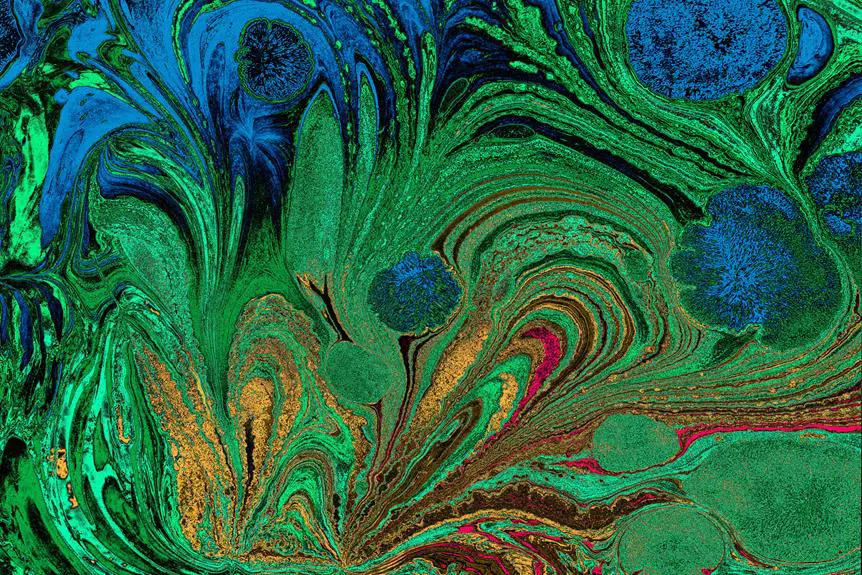Hey there, did you know that acrylic paint is one of the most versatile and durable types of paint for fabric?
But what if you accidentally get some on your favorite shirt or fabric? You might be wondering, can acrylic paint wash off fabric?
In this quick guide, we'll delve into the intricacies of removing acrylic paint from fabric. From understanding the properties of acrylic paint and fabric to exploring both water-based and solvent-based methods for removal, we've got you covered.
Get ready to master the art of rescuing your fabric from stubborn acrylic paint stains with our in-depth insights and professional tips.
Key Takeaways
- Acrylic paint bonds and dries on fabric, creating a durable design.
- Different fabrics may require different pre-treatment methods for paint removal.
- Water-based methods can be effective for removing acrylic paint from fabric, but fabric compatibility varies.
- Solvent-based methods, such as paint thinner and rubbing alcohol, can dissolve stubborn acrylic paint stains, but caution should be taken and non-toxic methods should be considered first.
Understanding Acrylic Paint and Fabric
Acrylic paint adheres to fabric through a process of bonding and drying, creating a durable and long-lasting design. Understanding the properties of acrylic paint is crucial for ensuring its compatibility with different types of fabric. Acrylic paint consists of pigment suspended in an acrylic polymer emulsion, which acts as a binder and determines its adhesion to fabric. When selecting fabric for acrylic painting, prioritize natural fibers like cotton and linen, as they provide a more absorbent and textured surface for the paint to adhere to. Additionally, synthetic fabrics such as polyester can also be used, but may require additional preparation to improve paint adhesion.
To ensure the longevity of your acrylic design on fabric, it's important to consider paint removal techniques and fabric care. In the event of a mistake or the need to change the design, acrylic paint can be removed from fabric using isopropyl alcohol or acetone. However, it's crucial to test these removal methods on a small, inconspicuous area of the fabric first to avoid any potential damage.
Furthermore, when caring for fabric painted with acrylics, gentle hand washing or the use of a gentle machine wash cycle can help preserve the design. Additionally, avoiding harsh chemicals and excessive heat during the washing and drying process can contribute to maintaining the vibrancy and integrity of the acrylic-painted fabric.
Preparing the Fabric for Paint Removal
Before you begin removing acrylic paint from fabric, it's crucial to prepare the fabric properly to ensure effective paint removal.
Fabric pre-treatment methods, such as using a pre-wash solution or gently scrubbing the affected area, can help loosen the paint and make it easier to remove.
Understanding the best practices for preparing the fabric will contribute to successful paint removal and help restore your fabric to its original state.
Fabric Pre-Treatment Methods
First, thoroughly clean the fabric to remove any dirt, oils, or residues that may interfere with the paint removal process. This step is crucial as it ensures that the fabric is free from any contaminants that could hinder the effectiveness of the pre-treatment options.
When considering pre-treatment options, it's important to take into account the fabric compatibility. Different fabrics may require different pre-treatment methods based on their composition and sensitivity. For example, natural fibers like cotton or linen may respond differently to pre-treatment compared to synthetic fabrics such as polyester or nylon.
Understanding the compatibility of the fabric with various pre-treatment options is essential for achieving successful paint removal. By selecting the appropriate pre-treatment method based on fabric compatibility, you can effectively prepare the fabric for paint removal while minimizing the risk of damage or discoloration.
Effective Paint Removal
To effectively prepare the fabric for paint removal, begin by assessing the type of fabric and identifying the most suitable pre-treatment method. Consider the fabric compatibility and the level of stain prevention required to determine the best approach for removing the acrylic paint. Here's a table to help you understand the pre-treatment methods:
| Fabric Type | Pre-Treatment Method | Stain Prevention Level |
|---|---|---|
| Cotton | Pre-soaking with detergent | High |
| Polyester | Spot treatment with solvent | Medium |
| Silk | Gentle hand washing | Low |
Water-Based Methods for Removing Acrylic Paint
You can remove acrylic paint from fabric using water-based methods. When considering water-based methods for removing acrylic paint from fabric, there are a few important factors to keep in mind.
- Gentle Patience: Using water-based methods requires patience and a gentle touch to avoid damaging the fabric. It's important to approach the process with care and attention to detail.
- Fabric Compatibility: Not all fabrics react the same way to water-based methods. Understanding the compatibility of the fabric with water and the specific method you plan to use is crucial to achieving the best results.
- Environmental Impact: Water-based methods are generally more environmentally friendly compared to harsh chemical alternatives. By choosing these methods, you're not only caring for your fabric but also minimizing the impact on the environment.
- Effectiveness: Water-based methods can be highly effective in removing acrylic paint from fabric, especially when paired with the right techniques. Understanding the intricacies of these methods can help you achieve the best results while preserving the fabric's integrity.
Solvent-Based Methods for Removing Acrylic Paint
If you've got some stubborn acrylic paint stains on your fabric, it's time to consider solvent-based methods for removing them.
Using paint thinner or rubbing alcohol can be effective in breaking down and dissolving the acrylic paint, making it easier to remove from the fabric.
These methods require care and precision, but they can be highly effective in tackling tough acrylic paint stains.
Using Paint Thinner
When dealing with removing acrylic paint from fabric, start by applying paint thinner to the affected area. However, it's essential to consider the safety precautions and environmental impact of using paint thinner. Here are some important points to keep in mind:
- Ventilation: Ensure proper ventilation when using paint thinner to avoid inhaling harmful fumes.
- Protective Gear: Always wear gloves and a mask to protect your skin and respiratory system.
- Disposal: Dispose of used paint thinner responsibly to prevent environmental harm.
- Alternative Methods: Consider using safer, non-toxic methods first before resorting to paint thinner.
Rubbing Alcohol Method
When dealing with removing acrylic paint from fabric, it's important to consider the effectiveness and safety of using the rubbing alcohol method as an alternative to paint thinner. The rubbing alcohol method involves applying an alcohol solution to the affected area to break down and remove the acrylic paint. However, before using this method, it's crucial to assess fabric compatibility and the potential for colorfastness and damage. Here's a quick overview to help you decide if the rubbing alcohol method is suitable for your needs:
| Pros | Cons |
|---|---|
| Effective solvent-based | Potential fabric damage |
| Removes paint quickly | Colorfastness concerns |
| Readily available | Strong odor |
| Affordable | Flammable |
Carefully weigh these factors to determine if the rubbing alcohol method is the right choice for your fabric and acrylic paint removal needs.
Tips for Treating Stubborn Acrylic Paint Stains
To effectively treat stubborn acrylic paint stains on fabric, start by gently scraping off any excess paint using a butter knife or the edge of a credit card. Be careful not to spread the paint further into the fabric while doing this. Once you've removed as much of the dried paint as possible, it's time to tackle the remaining stain.
Here are some tips for treating stubborn acrylic paint stains:
- Blot the stain with a clean cloth dipped in warm, soapy water to help loosen the paint from the fabric fibers.
- Apply a small amount of rubbing alcohol to the stained area and gently blot with a clean cloth. This can help dissolve the paint and lift it from the fabric.
- For tough stains, consider using a commercial stain remover specifically designed for acrylic paint. Always test these products on a small, inconspicuous area of the fabric first to ensure they won't cause damage.
- Once the stain has been treated, launder the fabric according to the care instructions, using the hottest water temperature suitable for the fabric to help remove any remaining traces of paint.
Final Thoughts and Additional Tips
You can further protect your fabric by applying a fabric sealant after removing the acrylic paint stain. This will help prevent future stains and make it easier to clean the fabric in the future. Additionally, here are some final tips and best practices to keep in mind when dealing with acrylic paint stains on fabric:
| Tips for Treating Acrylic Paint Stains |
|---|
| 1. Act Quickly |
| 2. Blot, Don't Rub |
| 3. Test Stain Removal Products |
| 4. Use Gentle Cleaning Methods |
| 5. Consider Professional Cleaning |
Acting quickly is crucial as it can prevent the paint from setting into the fabric. When treating the stain, remember to blot the area instead of rubbing to avoid spreading the paint. Always test any stain removal products on a small, hidden area of the fabric to ensure they won't cause further damage. Use gentle cleaning methods to avoid damaging the fabric, and if the stain persists, consider seeking professional cleaning services.
Frequently Asked Questions
Can Acrylic Paint Be Removed From Delicate or Sheer Fabrics Without Damaging Them?
To remove acrylic paint from delicate fabrics without damage, use a gentle touch and mild detergent. Test a small hidden area first. Blot, don't rub, and rinse thoroughly. For fabric painting, best practices include pre-washing and heat-setting for lasting results.
Are There Any Methods for Removing Acrylic Paint From Fabrics That Have Been Heat-Set or Dried in a Dryer?
To remove heat-set acrylic paint from fabric, try pre-treating with a fabric solvent. Heat transfer can weaken the bond, making removal easier. Acrylic paint's durability can make it challenging, but with the right methods, it's possible.
Is There a Specific Type of Brush or Applicator That Should Be Used When Applying Acrylic Paint to Fabric to Make Removal Easier?
To prepare fabric for acrylic paint, ensure it's clean and free from sizing. Choose a brush or sponge applicator for even coverage. Once dry, heat-set the paint with a dryer or iron. To remove, use a mix of dish soap and water or a fabric paint remover.
Can Acrylic Paint Stains Be Removed From Fabric That Has Already Been Washed and Dried?
To remove dried acrylic paint stains from fabric, try a fabric pre-treatment for best results. You can also make your own DIY fabric paint remover using household ingredients like vinegar and dish soap to effectively tackle stubborn stains.
Are There Any Specific Precautions or Safety Measures to Consider When Using Solvent-Based Methods for Removing Acrylic Paint From Fabric?
When using solvent-based methods for removing acrylic paint from fabric, it's crucial to observe precautionary measures for solvent safety. Heat set removal should be carefully executed, especially on delicate fabrics to avoid damage.
- How Do You Unwrinkle Chiffon? - April 23, 2024
- What Material Is Best for Hot Weather? - April 23, 2024
- Is Chiffon a Cheap Fabric? - April 23, 2024





